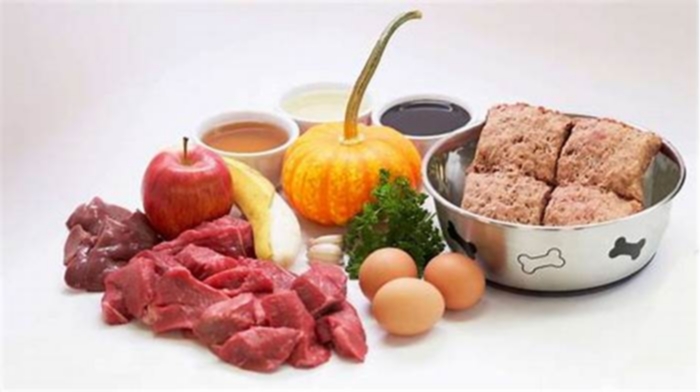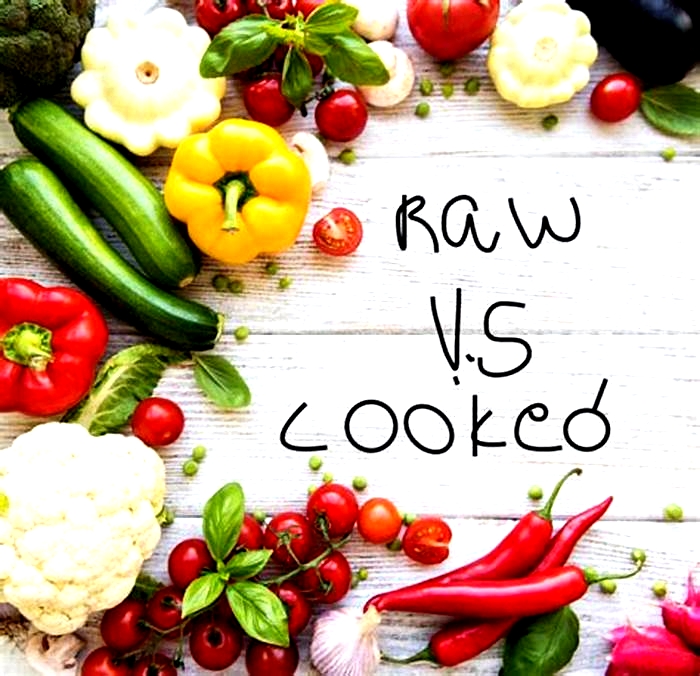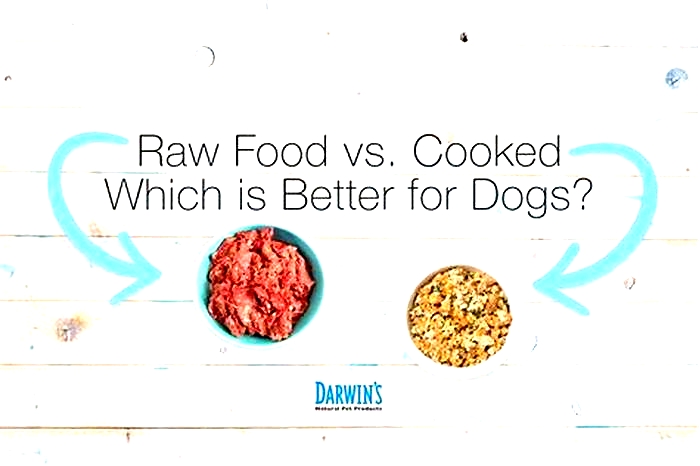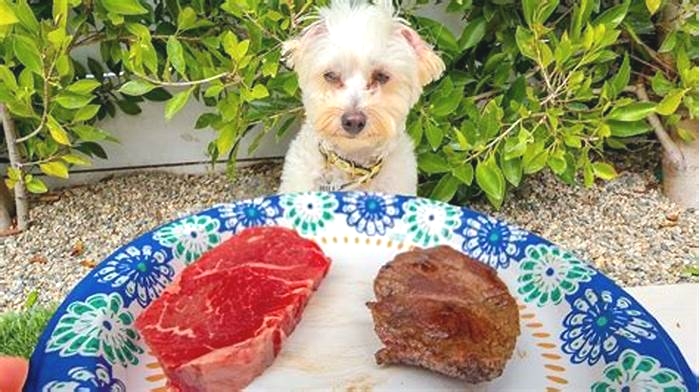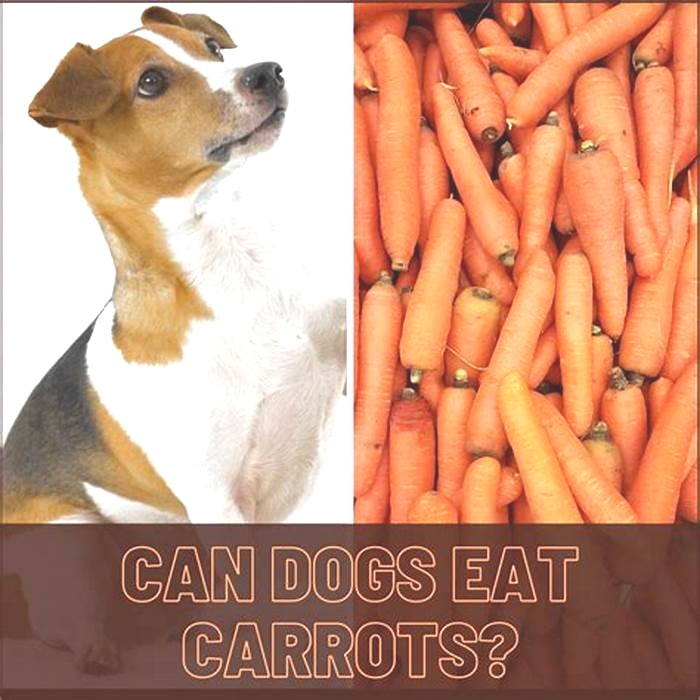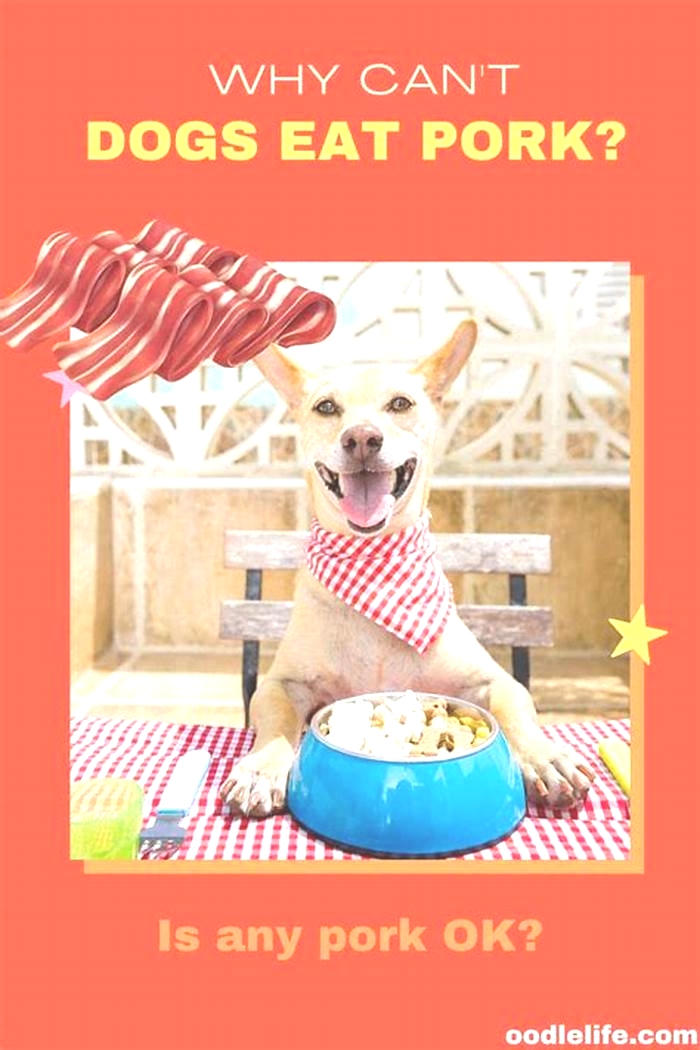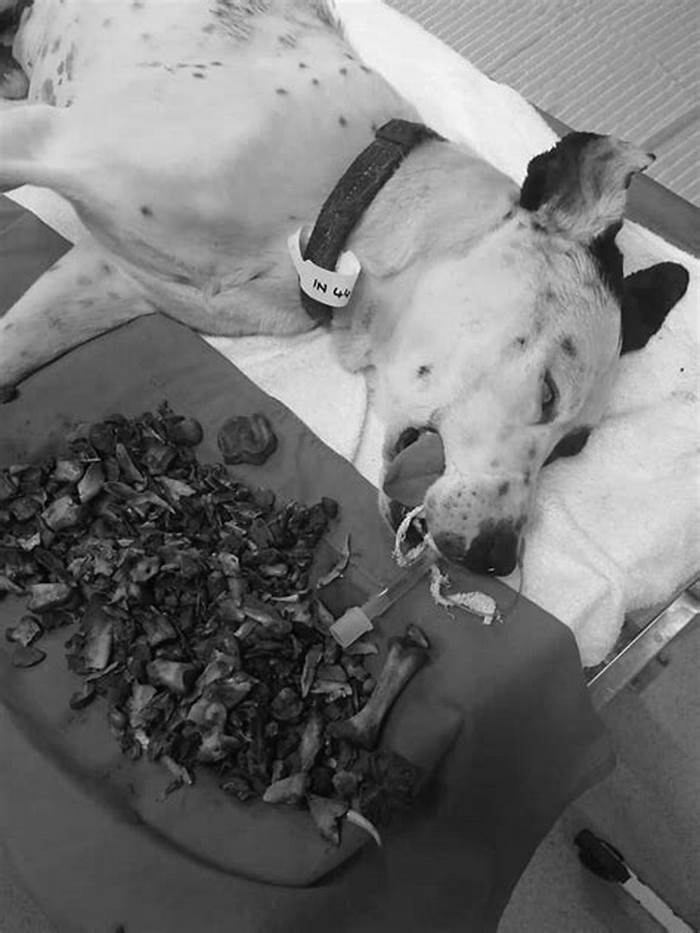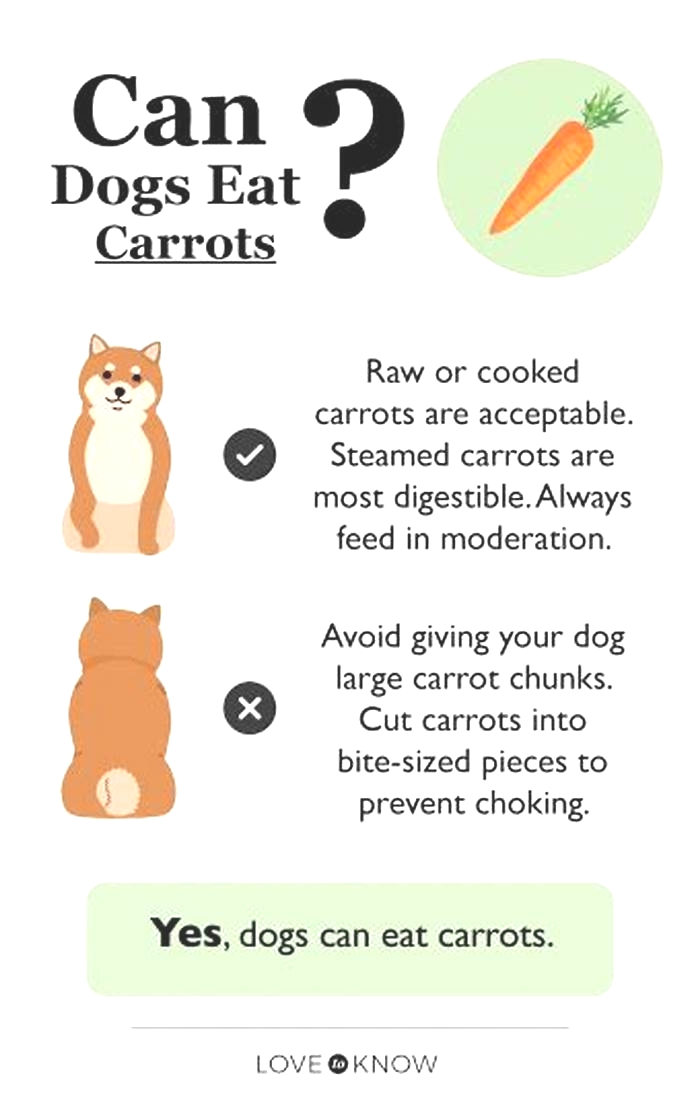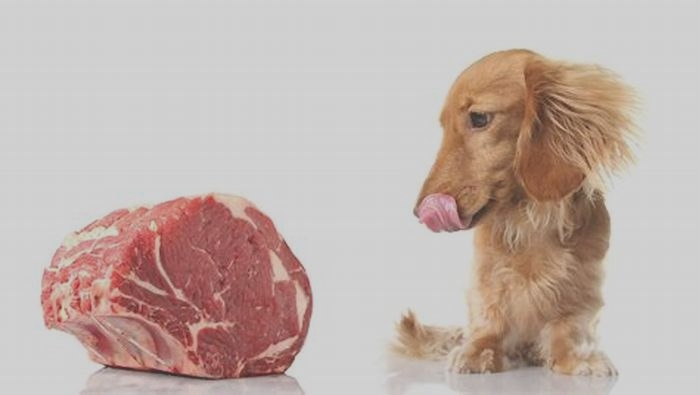Can you mix raw and cooked dog food
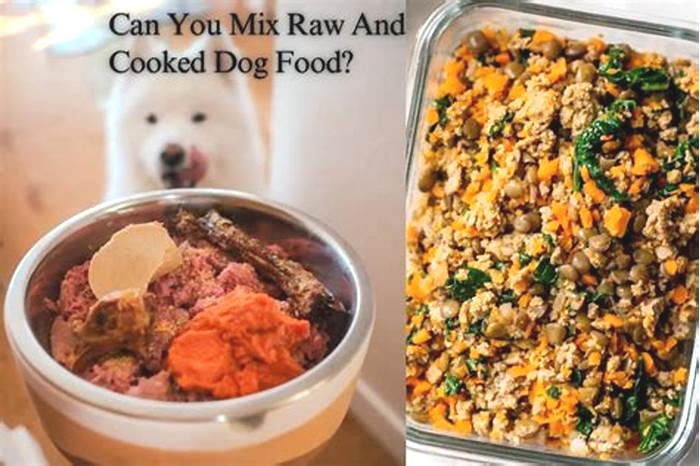
Can You Mix Raw and Cooked Dog Food?
Mixing both raw and cooked dog food has many health benefits. Raw and cooked food both have their pros and cons. Combining the two is a great way to ensure your dog gets the best of both worlds. Just be sure to put in the work to create a well-balanced diet.
Several people have moved away from kibble and manufactured dog food and have opted to put their dogs on a homemade diet.
You may have heard of the raw food diet, or maybe you have heard of people cooking their dogs meals instead of giving them kibble. There are many pros and cons to each diet, but can these two diets be mixed?
We will discuss whether you can combine raw and cooked food and the possible benefits.
Why Feed Your Dog Raw or Cooked Food?
Fussy pets
Some dogs are picky or fussy eaters. Have you ever accidentally purchased a different brand of food for your dog and noticed your dog made a fuss about eating this strange food?
For some dogs, being picky and fussy is not a once-in-a-while thing. Having the ability to make their meals yourself may be easier than convincing them to eat the dry kibble they dont like.
Fussy pets can also mean sensitivity to certain ingredients, and choosing what your dog eats can be beneficial to their overall health and well-being.
Health Benefits
Another reason for switching from dry kibble to raw or cooked food is because of the potential health benefits.
As stated in the previous section, some fussy pets have particular sensitivities to certain ingredients. With Homemade food, you can keep those ingredients out.
However, even if your dog doesnt have a sensitivity to a few of the common ingredients, a homemade diet also has general health benefits since they do not have the typical preservatives seen in dog kibble.
Unfortunately, most (if not all dog kibble) have preservatives that lengthen the shelf life of the food. These ingredients are not the best for your dog. A move to raw and cooked food will solve this issue.
Aside from preservatives, other ingredients found in some of the popular dry kibble brands arent great for dogs.
Some brands include cheap alternatives to other ingredients that do not have any nutritional value and are not nutritionally balanced. For example, several commercial dog foods are now mostly grained-based (which is not beneficial for dogs).
Raw Food
The Benefits of Raw Food
A raw food diet consists of uncooked muscle attached to the bone, organs like the liver and kidney, raw eggs, green vegetables, fruit, and some dairy. As you noticed, these food items are in their original form. There is no cooking and definitely no seasoning.
There are many health benefits offered by a raw food diet, which is a big reason dog owners are making the switch. Some benefits include a shinier coat, healthier skin, cleaner teeth, healthier stool, and a boost to the immune system.
These health benefits can help your dog not only live to old age, but that it does so in good health.
Another benefit related to the raw food diet is increased energy levels. A definite plus for older dogs! Raw food diets have been shown to increase energy levels even in older adults who are more sedentary.
Risks of the Raw Food
Even though there are several benefits, we should also mention potential risks for having your dog on a raw food diet.
The most significant risk of feeding your dog a raw food diet is nutritional deficiency. Although there are a lot of fillers in dry kibble, one of the biggest benefits to dry kibble is that its nutritionally balanced.
A raw food diet can lead to several health issues if not balanced correctly. Some consequences of an imbalanced raw food diet are dull coats, bad skin, and weak bones. This can be due to the lack of calcium and phosphorus in your dogs diet, one of the main minerals for maintaining healthy skin, hair, and nails.
Another risk for dogs on the raw food diet is worsening present health issues such as kidney or liver problems. This high protein diet is unsuitable for dogs with these conditions and may worsen their current health condition.
Lastly, there is also a health concern for you, the owner. Due to the handling of raw meat, there is a higher risk of exposure to salmonella. This can be easily avoided through appropriate cleaning methods.
Cooked Food
The Benefits of cooked food
Similar to raw foods, there are many benefits dogs can get from being on a cooked food diet. For example, as previously mentioned, sensitivity to certain ingredients is a reason for choosing cooked or raw food diets. Cooking your pets food allows owners to avoid any allergens a pet may have.
Another benefit to the cooked food diet is the freedom to cater to your dogs specific needs if they have certain health conditions. There can be a lot involved in caring for a dog with a health condition, and spending the energy picking apart dry kibble brands can be avoided with this type of diet.
A final benefit to giving your dog cooked food is knowing the quality of the food. You get to decide what your dog eats, where you get the ingredients, and how you prepare the food. There is no mystery to this process, and for many owners, it can be a way to make sure that they are caring for their dog in the best way possible.
Risks of Cooked Food
The risks of feeding your dog homemade cooked food are the same risks associated with the raw diet. Again, dry kibble has plenty of cons, but at least you know its nutritionally balanced. When cooking food for your dog, you might miss out on key ingredients essential for their health.
Is it Safe to Mix Raw and Cooked Food?
Combining raw and cooked food is safe as long as you put in the work to create a well-balanced diet.
With that said, before feeding your dog a homemade diet, consider your dogs age. It is best to wait until your puppy has reached adulthood before starting them on a diet that includes raw meat, as they may be more sensitive to bacteria and infections.
Example of How to Combine Raw Food With Cooked Food
A safe combination for your pet can include a small portion of boiled chicken or lamb (without bones to avoid possible choking). In combination with the protein, you can include cooked pumpkin or raw grated carrots to improve digestion. Adding a grain, such as rice (cooked in water), is also an excellent option for your pet.
Remember to Balance The Meals
The biggest benefit is that you can control what your dog is eating. Whether for health concerns or just mindfulness about what is being put into your dogs body. Remember, always refer to a vet or do thorough research to make sure the meal is correctly balanced to get the most benefits out of a combination diet!
Recommended For You
Can You Mix Raw and Cooked Dog Food?
Mixing raw and cooked dog food is a common question among dog owners. Some dog owners prefer to feed their pets a combination of raw and cooked food for a variety of reasons, such as providing a more balanced diet or improving their dogs overall health. However, there are potential risks associated with mixing raw and cooked dog food that pet owners need to be aware of.
One of the main concerns with mixing raw and cooked dog food is the risk of bacterial contamination. Raw meat can contain harmful bacteria such as Salmonella and E. coli, which can cause serious illness in both dogs and humans. If raw and cooked food are mixed together, the bacteria from the raw meat can contaminate the cooked food and increase the risk of foodborne illness.
To mitigate the risk of bacterial contamination, pet owners should handle raw meat carefully and follow proper food safety guidelines. This includes washing hands before and after handling raw meat, using separate cutting boards and utensils for raw and cooked food, and cooking raw meat to a safe temperature. It is also important to consult with a veterinarian or animal nutritionist before making any significant changes to a dogs diet.
Mixing Raw and Cooked Dog Food
Many dog owners wonder if it is safe to mix raw and cooked dog food. The answer is not straightforward, as it depends on several factors.
Meal toppers, which are often raw, can be added to cooked food to provide additional nutrients and variety. However, its important to ensure that the raw ingredients are of high quality and free from contaminants. Cross-contamination is a concern when handling raw food, so its crucial to clean all surfaces and utensils thoroughly before and after use.
Microwaving is a common way to cook dog food quickly, but it can also affect the nutritional value of the food. When mixing raw and cooked food, its essential to ensure that the raw components are not cooked or heated to a temperature that could compromise their nutritional value.
Cooking raw dog food can eliminate harmful bacteria and parasites, but it can also destroy some of the nutrients. When mixing raw and cooked food, its essential to ensure that the raw components are not cooked or heated to a temperature that could compromise their nutritional value.
In summary, mixing raw and cooked dog food can be done safely, but it requires careful consideration of the quality of ingredients, cross-contamination risks, and cooking methods. Consultation with a veterinarian or a canine nutritionist can help ensure that your dogs diet is balanced and meets their nutritional needs.
Understanding Raw and Cooked Dog Food
Raw and cooked dog food are two popular options for pet owners looking to provide their furry friends with a nutritious diet. Both types of food have their benefits and drawbacks, and its important to understand the differences between the two before making a decision.
Raw Dog Food
Raw dog food is made from uncooked ingredients, such as raw meat, fruits, and vegetables. Proponents of raw dog food argue that it is more natural and nutritious for dogs, as it contains enzymes and nutrients that may be lost during the cooking process.
However, its important to note that raw dog food may also contain harmful bacteria, such as salmonella and E. coli. This can pose a risk to both the dog and their human family members, as the bacteria can be transmitted through contact with the dogs feces or saliva.
Cooked Dog Food
Cooked dog food, on the other hand, is made from cooked ingredients, such as cooked meat, grains, and vegetables. This type of food is often easier to digest and may be a better option for dogs with sensitive stomachs.
However, its important to ensure that the cooked dog food is of high quality and contains all of the necessary nutrients for a balanced diet. Cooking can also cause some loss of nutrients, so its important to choose a high-quality brand and ensure that the food is easily digestible.
Quality and Digestibility
When choosing between raw and cooked dog food, its important to consider the quality and digestibility of the food. Look for high-quality ingredients and choose a brand that is transparent about their sourcing and manufacturing practices.
Additionally, its important to choose a food that is easily digestible for your dog. Some dogs may have trouble digesting certain ingredients, such as grains or certain types of protein. Consult with your veterinarian to determine the best diet for your dogs specific needs.
Protein and Nutrients
Protein is an important nutrient for dogs, and both raw and cooked dog food can provide this essential nutrient. Raw dog food is often higher in protein, as it contains more raw meat. Cooked dog food, however, can still provide a high-quality source of protein if made with high-quality ingredients.
Its also important to ensure that your dogs diet contains all of the necessary nutrients for a balanced diet. Look for foods that contain a variety of fruits, vegetables, and other nutrient-rich ingredients. Consult with your veterinarian to determine the best diet for your dogs specific needs.
Overall, both raw and cooked dog food can provide a nutritious diet for your furry friend. Its important to choose a high-quality brand and ensure that the food is easily digestible and contains all of the necessary nutrients for a balanced diet. Consult with your veterinarian to determine the best diet for your dogs specific needs.
The Raw Feeding Method
Raw feeding involves providing dogs with a diet that is primarily composed of raw meat, bones, and organs. This method is gaining popularity among dog owners who believe that it provides a more natural and healthier diet for their pets.
The raw diet typically consists of raw meaty bones, such as chicken necks, lamb ribs, and beef bones. These bones provide essential nutrients, including calcium and phosphorus, which are important for healthy bones and teeth. Raw feeding also includes organ meat, such as liver and kidney, which are rich in vitamins and minerals.
In addition to meat and bones, raw feeding may also include vegetables and fruits, which provide essential vitamins, minerals, and fiber. Some dog owners also add fish oil or other supplements to their dogs raw food to ensure that they are getting all the necessary nutrients.
One of the main benefits of raw feeding is that it eliminates the need for processed dog food, which may contain additives, preservatives, and other chemicals. Raw feeding is also believed to improve digestion, reduce allergies, and promote a healthier coat and skin.
However, it is important to note that raw feeding may not be suitable for all dogs. Some dogs may have difficulty digesting raw meat and bones, and there is a risk of bacterial contamination if the food is not handled properly. It is important to consult with a veterinarian before starting a raw diet to ensure that it is appropriate for your dogs individual needs.
Overall, raw feeding can be a healthy and natural option for dogs, but it is important to do your research and consult with a veterinarian to ensure that it is the right choice for your pet.
Health Benefits and Concerns
Mixing raw and cooked dog food can have both health benefits and concerns. It is important to understand the risks and benefits before making a decision.
Health Benefits
One of the main benefits of mixing raw and cooked dog food is that it can improve digestion. Raw food contains natural enzymes and bacteria that can help break down food and improve nutrient absorption. Cooked food, on the other hand, is easier to digest and can provide a good source of protein.
Another benefit of mixing raw and cooked dog food is that it can help keep teeth clean. Raw food requires more chewing, which can help remove plaque and tartar from teeth. Cooked food, on the other hand, can be softer and easier to swallow, which can be beneficial for dogs with dental problems.
Concerns
One of the main concerns with mixing raw and cooked dog food is the risk of bacterial contamination. Raw food can contain harmful bacteria such as salmonella and E. coli, which can cause illness in both dogs and humans. Cooked food, on the other hand, is less likely to contain harmful bacteria, but can still pose a risk if not stored and handled properly.
Another concern with mixing raw and cooked dog food is the risk of constipation. Raw food can be high in fibre, which can help regulate bowel movements. Cooked food, on the other hand, can be low in fibre, which can lead to constipation in some dogs.
In addition, mixing raw and cooked dog food can be risky for dogs with sensitive stomachs. Raw food can be harder to digest and can cause gastrointestinal upset in some dogs. Cooked food, on the other hand, can be easier to digest, but can still cause problems if the dog has a sensitive stomach.
Overall, mixing raw and cooked dog food can have both health benefits and concerns. It is important to consult with a veterinarian before making any changes to your dogs diet.
Practical Aspects of Feeding Raw and Cooked Food
Feeding a combination of raw and cooked food to dogs can be a convenient and healthy option for pet owners. However, there are some practical aspects to consider when implementing this feeding method.
Bowls and Kibble
When feeding both raw and cooked food, it is important to use separate bowls to avoid cross-contamination. Additionally, if the dog is used to eating kibble, it is recommended to feed it separately from the raw and cooked food to prevent digestive issues.
Dry Dog Food
If the dog is used to eating dry dog food, it is important to gradually introduce raw and cooked food to avoid digestive upset. Start by mixing a small amount of raw or cooked food with the dry food and gradually increase the amount over time.
Defrosting
If feeding raw food, it is important to defrost it properly to avoid bacterial contamination. Thaw the food in the refrigerator or in a bowl of cold water, never in the microwave or at room temperature.
Poop
It is normal for dogs to have different stool consistency when transitioning to a new diet. However, if the dog experiences diarrhea or constipation for an extended period of time, it may be necessary to adjust the feeding method or consult with a veterinarian.
Butcher
When purchasing raw meat from a butcher, it is important to ensure that the meat is of high quality and has been handled properly to avoid bacterial contamination. Additionally, it is recommended to freeze the meat for at least 48 hours before feeding to kill any potential parasites.
Overall, feeding a combination of raw and cooked food to dogs can be a healthy and convenient option for pet owners. By following these practical considerations, pet owners can ensure their dogs receive a balanced and nutritious diet.
Cost and Lifestyle Considerations
When it comes to feeding your dog a mix of raw and cooked food, cost and lifestyle considerations play a significant role.
Firstly, it is important to note that feeding a raw diet can be expensive. Raw meat is often more expensive than its cooked counterpart, and sourcing high-quality ingredients can add to the cost. However, it is possible to make a raw diet more cost-effective by buying in bulk or sourcing ingredients from local farms.
On the other hand, feeding a commercial diet can also be expensive, especially if you opt for high-quality, grain-free options. It is important to consider your budget and decide what works best for you and your dog.
In terms of lifestyle, feeding a mix of raw and cooked food requires more preparation and planning than feeding a commercial diet. Raw food needs to be handled and stored carefully to prevent contamination, and cooked food needs to be prepared in a way that retains its nutritional value. This may not be feasible for all dog owners, especially those with busy schedules.
It is also important to consider the use of fillers in commercial dog food. Fillers are often used to bulk up the food and can have little nutritional value. When feeding a mix of raw and cooked food, you have more control over the ingredients and can avoid fillers altogether.
Overall, the decision to mix raw and cooked dog food should be based on what works best for you and your dog. It is important to consider the cost and lifestyle implications before making any changes to your dogs diet.
Professional Opinions and Advice
When it comes to mixing raw and cooked dog food, there are varying opinions from professionals in the pet industry. Here are some insights and advice from experts:
Vets
Veterinarians generally advise against mixing raw and cooked dog food. They believe that raw food can contain harmful bacteria and parasites that can cause illness in dogs. On the other hand, cooked food is safer and easier to digest for dogs. Vets recommend choosing one type of food and sticking to it to avoid any potential health risks.
Pet Parents
Pet parents have different opinions on mixing raw and cooked dog food. Some believe that it provides a balanced diet for their dogs. Others are concerned about the risk of bacterial contamination from raw food. It is important for pet parents to do their research and consult with their vet before deciding on a diet for their dog.
Human Nutrition
Some pet owners may be tempted to mix raw and cooked dog food because of the belief that it is similar to a humans diet. However, it is important to note that dogs have different nutritional needs than humans. Mixing raw and cooked food may not provide a balanced diet for dogs, and can potentially lead to health problems in the long run.
Age and Weight
Age and weight are important factors to consider when deciding on a dogs diet. Puppies and senior dogs have different nutritional requirements than adult dogs. Additionally, overweight or underweight dogs may require a specific diet plan. It is best to consult with a vet to determine the appropriate diet for a dog based on their age and weight.
In conclusion, while there are differing opinions on mixing raw and cooked dog food, it is important to prioritize a dogs health and nutritional needs. Consulting with a vet and doing thorough research can help pet parents make an informed decision on their dogs diet.
Frequently Asked Questions
Is it safe to mix cooked and raw dog food?
Yes, it is safe to mix cooked and raw dog food as long as you follow proper food safety guidelines. Make sure to handle both types of food separately and clean all utensils and surfaces thoroughly. It is also important to ensure that the food is stored at appropriate temperatures to prevent bacterial growth.
Can I alternate between cooked and raw dog food?
Yes, you can alternate between cooked and raw dog food. In fact, many pet owners find that alternating between different types of food can provide a more balanced diet for their dog. However, it is important to make sure that your dog is still getting all the necessary nutrients from their diet.
What are the benefits of mixing raw and cooked dog food?
Mixing raw and cooked dog food can provide a range of benefits for your dog. Raw food can provide essential nutrients and enzymes that are destroyed during cooking, while cooked food can be easier to digest and provide a wider range of nutrients. Mixing the two can provide a balanced diet that meets all of your dogs nutritional needs.
Is it necessary to cook raw dog food?
It is not necessary to cook raw dog food, but it is important to handle it safely to prevent bacterial contamination. Many pet owners choose to feed their dogs a raw diet because they believe it is more natural and provides more nutrients. However, it is important to consult with a veterinarian or animal nutritionist to ensure that your dog is getting all the necessary nutrients from their diet.
What should I add to my dogs raw and cooked food mix?
When mixing raw and cooked dog food, it is important to provide a balanced diet that includes all the necessary nutrients. This may include adding supplements or other ingredients to ensure that your dog is getting everything they need. It is important to consult with a veterinarian or animal nutritionist to determine the best mix of ingredients for your dog.
Can I feed my dog a mix of homemade dog food and kibble?
Yes, you can feed your dog a mix of homemade dog food and kibble. In fact, many pet owners find that this provides a balanced diet that meets all of their dogs nutritional needs. However, it is important to make sure that the homemade dog food is properly balanced to ensure that your dog is getting all the necessary nutrients. It is also important to choose a high-quality kibble that meets your dogs nutritional needs.
Like this:
Like Loading...

